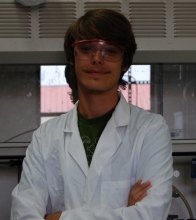
Major:
University:
Mentor(s):
Faculty Sponsor(s):
Faculty Sponsor's Department(s):
Project Title:
Project Description:
Nanoparticle synthesis has become a field of rising scientific and industrial significance due to the ever shrinking scale of newer technology. As characterization methods improve to show the nano-scale properties of ordered particles, the research has shifted to controlling the structures and morphologies of these nanoparticles by altering the synthesis methods and materials. Here, the properties of surfactant coated zinc selenide nanoparticles were observed after controlling the temperature and time of the reaction while also altering the surfactant from pure octadecylamine (ODA) to octadecylammonium-octadecylcarbamate (OAOC) by exposure to CO2. The resulting nanoparticles seemed to display little change in characteristics with temperature and time variations. Wurtzite crystalline forms, different from the bulk cubic zincblende forms, are being formed quickly and at low temperatures. Absorbance spectroscopy and photoluminescence measurements indicate a blue-shift of the ZnSe semiconductor band gap that is consistent with quantum confinement due to small nanoparticle dimensions. Relatively poor signal to noise ratios suggest low quantum efficiencies for all ZnSe samples but otherwise similar features that are thought to results from surface traps. In general, no significant changes are currently observed from changing the amine headgroups of ODA to the ammonium and carbamate headgroups of OAOC under the conditions (time, temperature) investigated. Additional experiments are underway to investigate ZnSe nanoparticle properties at lower synthesis temperatures and very early reactions times, where it is hypothesized that the slower reaction kinetics (for both CO¬2 release and ZnSe formation) will allow for the influences of CO2 at the initial stages of the reaction to be seen.
